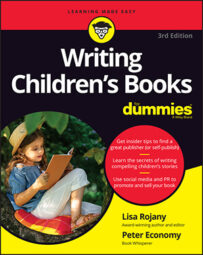When you have a beginning, middle, and end to your children's book story, you need to incorporate enough drama into your story, using pacing to keep the reader interested. Drama is struggle and conflict, emotionality and turbulence. Pacing is keeping the drama at a more heightened note than you would find in real life.
What your character wants (her burning desire), the actions she uses to achieve her goal (plot), and the conflicts that get in her way (drama), plus the anticipation and uncertainty of her getting to the goal line (pacing), all serve as the elements of a good story and memorable characters.
A good story, well-fleshed-out characters, and a beginning, middle, and end are only parts of what keep your readers engaged. If you don’t have adequate drama incorporated into the action or if your plot plods along from one event to the next, you will lose your readers.
Drama: A reason to turn the page
If your character experiences strong emotions due to the events of the story, you have drama. Likewise, if your character is tossed about by the turbulence of those events, such that his life is changed or his way of life is threatened, you also have drama.
The best way to make sure you have enough drama in your story is to ask yourself whether your character is struggling at each major plot point. Think about the tale of Cinderella. Is she suffering? Is she challenged? Is something threatening what she wants? Are the events in her life turbulent enough to keep people interested? If not, you have work to do.
Pacing: How you keep the pages turning
Pacing is the force that keeps the reader turning the pages, wanting — no, needing — to find out what happens next. In your story, each major plot point has to keep readers guessing as to what may happen next.
Because your audience likely has grown up on TV, video games, and smartphone apps with rapidly moving story lines, the action in children’s books is quicker and chapters are shorter than in the past. What does that mean for you as a writer? That you need to know when and how to pick up the pace in your story.
Here are some tips for creating good pacing in different types of children’s books:
In a picture book, you can keep the story going at a good clip by drawing out conflict evenly throughout and writing tightly and well.
In younger children’s chapter books and middle-grade books, you can end the chapters with cliffhangers leaving the reader with a question.
Literally, you can end with a question: Would Amanda figure out a way to get enough oxygen before the flooding waters completely engulfed her? Or figuratively: Amanda watched the flood waters rise, wondering when she would be forced to take her last breath. Just beware: Don’t do this with every chapter, or you lose the element of suspense.
In young adult novels, you still want to have chapters end on a high note, in the middle of a scene, at a tense moment in order to keep readers turning the pages, but you don’t have to be quite as heavy handed about it as you do when writing for younger readers.

